Start here to identify an unknown bee.
This guide has not been updated recently, and thus may contain outdated information. New, semi-automated species accounts are being developed that will soon replace those found here.
Step one – Photograph your bee. If possible, sharp photographs from multiple angles make this guide much easier to use. If you can’t get decent photo, this guide can still be used in conjunction with a mental image, and will provide suggestions of important features to look for on future bees. Here are a few tips for photographing bees.
Step two – Is it a bee? Click here for tips on separating bees from the many different look-a-likes. This can be much harder than expected.
Step three – Use the four images below (click to enlarge) to familiarize yourself with terminology and morphology important for identification. Many of these will be used throughout this guide. Additional features are explained on subsequent pages where necessary.
Step four – Pick the group below that looks closest to the bee in question. Don’t worry if it doesn’t fit perfectly, we have included several genera in multiple categories.
Disclaimer – Some of the information we present is incomplete or experimental. We’ll be constantly improving and expanding it – please let us know if you find errors or something confusing; .
Important Morphology
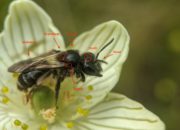
General body plan of a bee
Ocelli are light-sensing "eyes" on the top of the head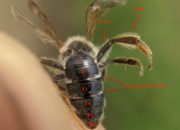
Abdomen detail
Abdominal segments (called terga) are generally labeled T1-T6/7. Males have 7, females have 6.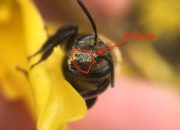
Face detail
The color and shape of the clypeus can be important for identification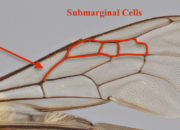
Wing detail
Vein pattern of the forewing can be very helpful. Pay particular attention to the shape of the basal vein and number of submarginal cells (2 vs. 3)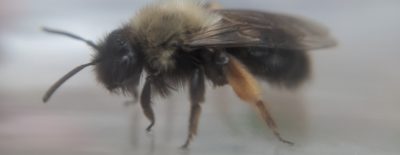
Hairy Bees
This group includes the two most familiar bee genera - bumble bees and honey bees, plus several similar genera.
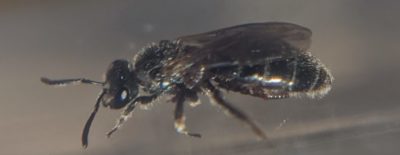
Little Black Bees
Nearly half the bee species in Vermont are small and dark. Bees in this group could easily be mistaken for gnats, small flies, or wasps.
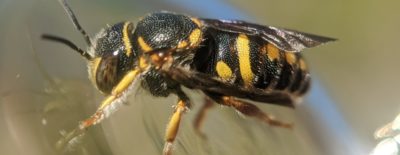
Black and Yellow Bees
A few genera of related bees are boldly patterned with yellow and black. The two most common species in this group are both non-native and often found in urban gardens.
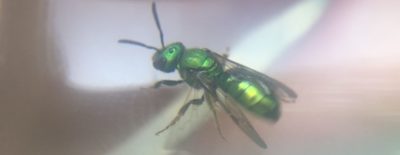
Green Bees
These bright green bees are distinctive as a group. Included are four genera with a total of seven species, several of which are frequently encountered.
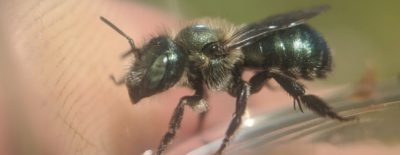
Bluish Bees
Though not as bright as the green bees, a small number of bees in Vermont have a distinct blue tinge. This group includes two frequently encountered genera, with most species being relativity small.
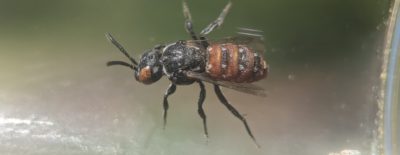
Colorful Bees
This group includes a wide range of shapes and sizes. All are cleptoparasitic genera that usurp the nests of other bees (think cowbirds). Most species either have large areas of red and yellow or have very short white hairs forming distinct bands or spots.






